ELO Bootlegs / Los 4 clásicos de los 70´s (tercera parte)

America Sees The Light
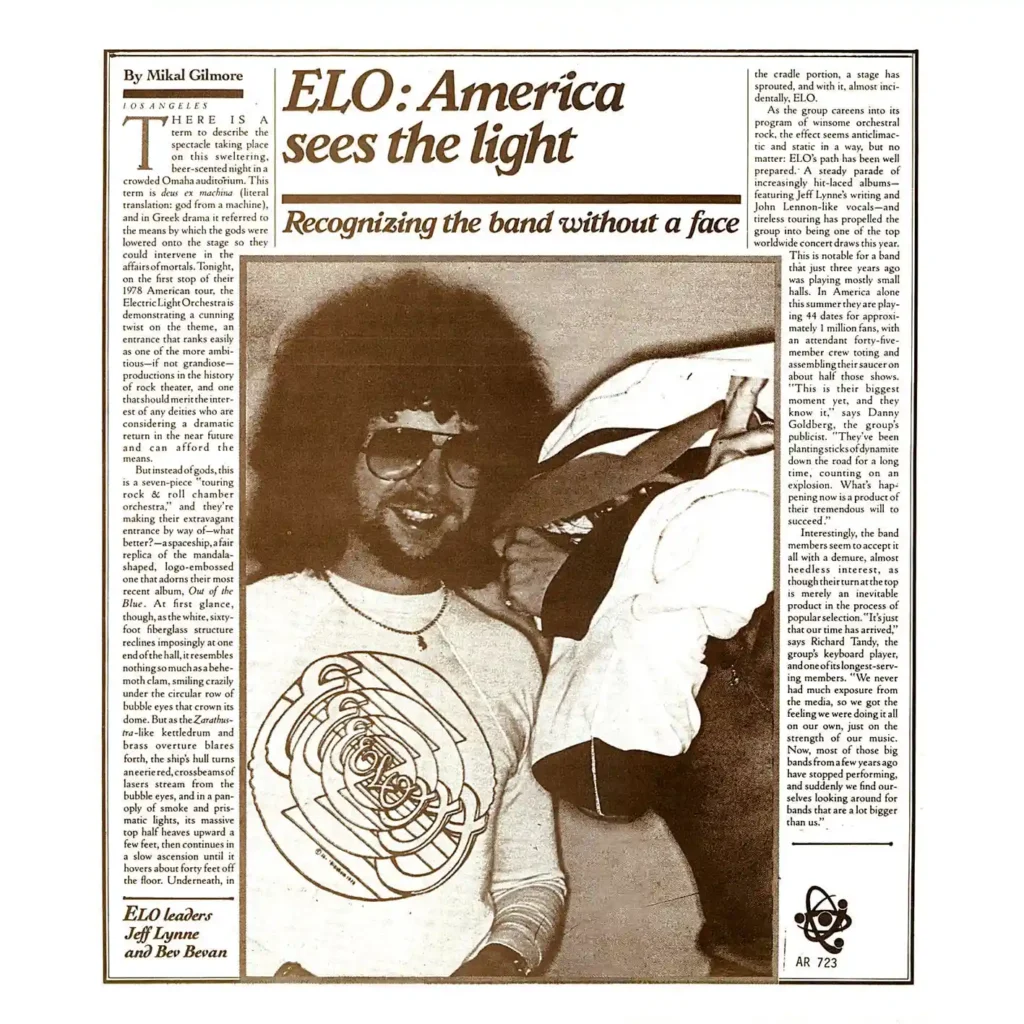
3º bootleg en vinilo de la E.L.O. siendo esta vez un doble LP editado por el sello pirata “Atomic Records” en 1978, con el numero AR 723.
Parece ser un único concierto, aunque no está en el orden correcto, ya que el principio del show es el 2º LP (lados 3 y 4) y seguiría el LP 1º (lados 1 y 2).
Este show (grabado también por la BBC) es de nuevo del “Face The Music World Tour” de 1976.
La portada (esta vez impresa en la cubierta) muestra en tonos marrones una foto y parte de un artículo (incompleto) de 1978 de la revista Rolling Stone, relatando extensamente aspectos y opiniones del primer concierto americano de la gira del “OVNI” del 78´.
Aunque en el label del 1º LP no aparece nada, en el del 2º, otra vez muestra una foto y créditos que no tiene absolutamente nada que ver con E.L.O.
Como curiosidades, señalar que la primera canción es Illusions In G Major aunque aquí la han titulado Doctor Let Me Teach Her, al igual que Fire On High que se ha transformado en ElDorado Overture.
Como tema extra de relleno, después de Roll Over Beethoven, aparece Kuiama, pero no en directo, sino la versión de estudio perteneciente al E.L.O. II del 72´.
El solo de Mik Kaminski incorpora; tras una demostración “insufrible” de ruidos y efectos de su violin; el clásico In The Hall Of The Mountain King seguido de Hungarian Dance nº 5 y Hoe Down apoyado por Kelly al bajo y Bev con percusiones y batería.
Aunque tampoco nos libramos de la todavía mas “insufrible”, abstracta y larguísima (pero imprescindible, en la época) sesión de ruidos extraños y efectos de la primera parte del solo de cello de Hug McDowell; seguida de El vuelo del moscardón (Flight Of The Bumble Bee) ahora sólo con la compañia del bajo de Kelly.
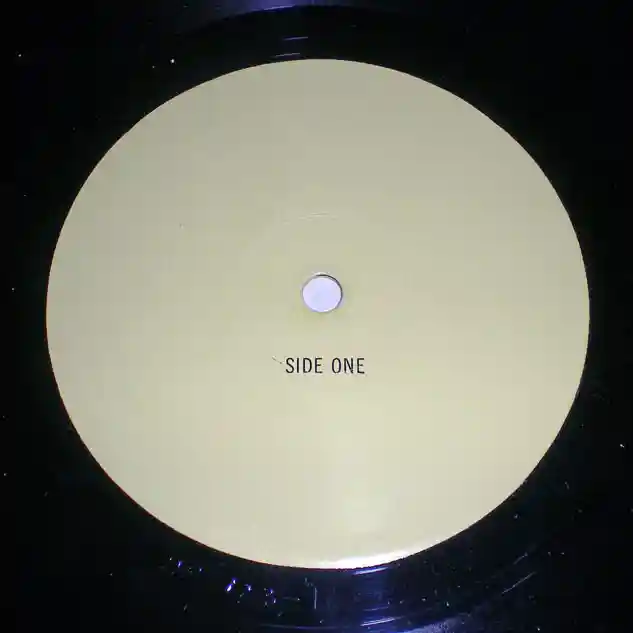
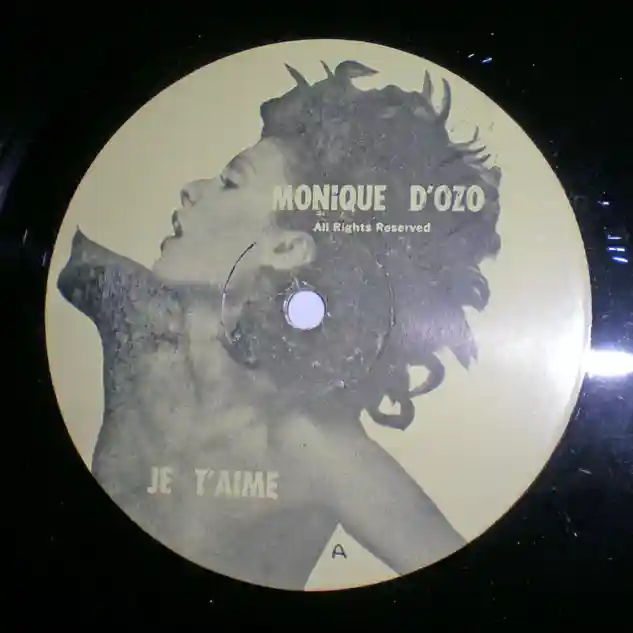
Estos son los créditos y el texto completo de la cubierta trasera del America Sees The Light.
Entre otras cosas, Bevan recalcaba la enorme dificultad que tenían de combinar violin y chelos con los altamente amplificados instrumentos de rock, y que lo solucionaron conectando el violín y chelos a amplificadores (a través de pastillas captoras instaladas en el propio violin y chelos).
Jeff Lynne-Guitar, vocals
Bev Bevan-Drums
Richard Tandy-Keyboards
Mik Kaminski-Violin
Hug McDowell-Cello
Kelly Groucutt-Bass
(aunque Melvin Gale no aparece escrito en esta formación, es obvio que está aquí)
Side One: Doctor Let Me Teach Her/Violin Solo/Hoe Down/Strange Magic/10538/Do Ya
Side Two: Evil Woman/Ma Ma Belle/Roll Over Beethoven/Kuiama
Side Three: ElDorado Overture/Poker/Nightrider/
Side Four: Violin Solo/Showdown/Can´t Get It Out Of My Head
Begun in 1972 by guitarist Roy Wood and Jeff Lynne of the British group the Move, the Electric Light Orchestra was intended to be a group that would experiment with strings and classical-music influences in the contex of rock and roll. The first album they produced, recorded by Lynne, Wood, drummer Bev Bevan, and cellist Hugh McDowell, was released in 1971. Called The Electric Light Orchestra, it was quite experimental but nevertheless successful in Britain. In 1972, Roy Wood left with McDowell to form a band called Wizzard, but Lynne and Bevan rebuilt ELO, gathering an eclectic group of musicians, some with experience in classical music, some with experience in rock. ELO, by then a nine-man group, went on to record ELO II, released in 1973. This album contained the group´s complex masterpiece and smash commercial success “Roll Over Beethoven”, an orchestral restatement of the Chuck Berry classic. The piece may have been a smash, but early concerts were not so successful. Bev Bevan recalls that ELO had enormous difficulty combining the violin and cellos with the highly amplified rock instruments. It wasn´t until they got some direct amplifiers for the strings that they were able to make the instruments work together. Their third album, On The Third Day, was mostly a conceptual album, but the fourth, ElDorado, was finally able to establish the group. Lynne considers it twice as good as any of their other albums. “It was the first time we used an actual orchestra rather than just a few strings dubbed again and again”. ELO´s best-selling single “Evil Woman” came from their fifth album, the gold-awarded Face The Music, and that was followed by a platinum collection of their greatest hits, Olé ELO, released in the summer of 1976. A New world Record, released in October of 1976, has sold more than 2 million copies, winning for them their second platinum disk. The year 1977 saw their single “Living Thing” reach the top ten, supported by their ambitious forty-city tour of the United States and Canada.
Atomic Records a division of Omega Artist Inc., 112 E. 47th St., New York, New York.
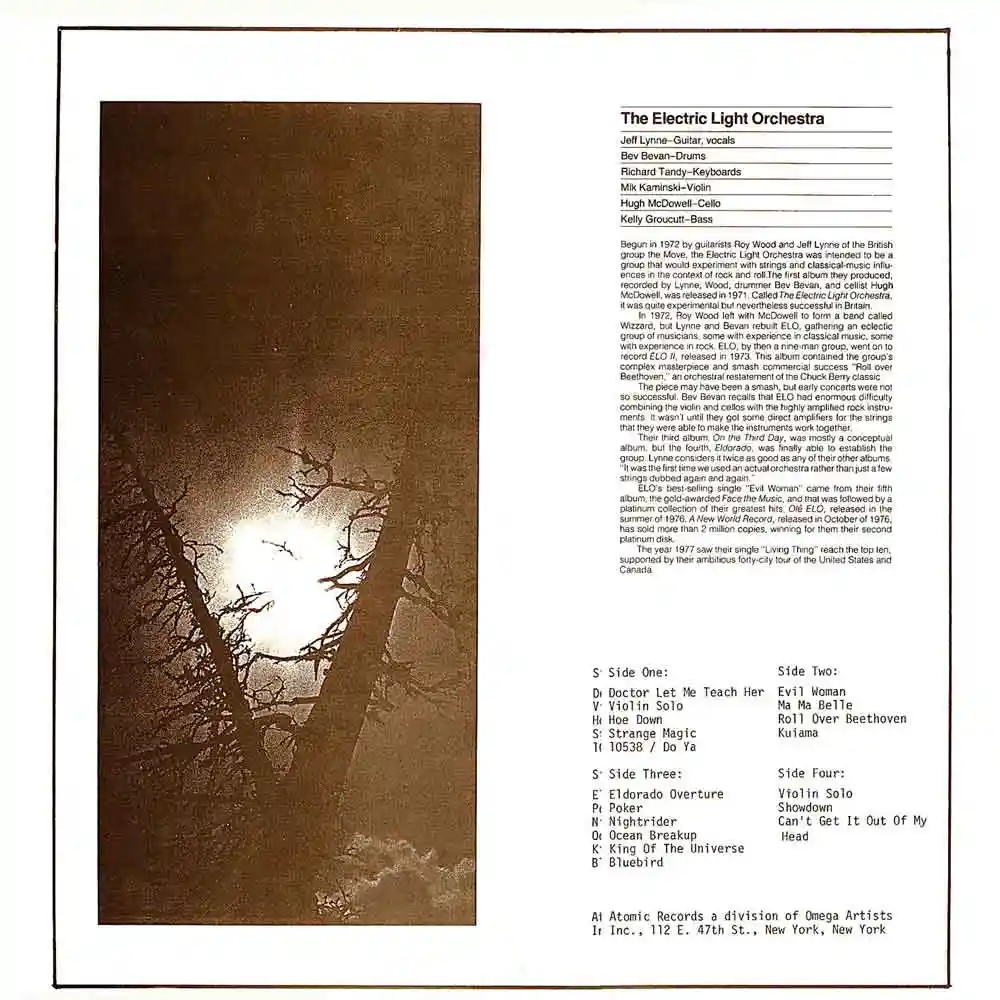
Cubierta trasera
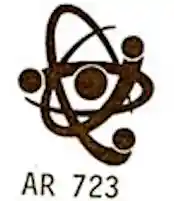
Numero del LP y Logo de Atomic Records
Este es el Rolling Stone nº 272 del 24 de Agosto de 1978, con Bruce Springsteen en portada, y el reportaje completo sobre la ELO (incluyendo la página que fue usada como portada para el America Sees The Light).
También el índice de la revista, donde aparece anunciado el reportaje sobre la ELO en la página 8, y un calendario de conciertos de Agosto del 78, en donde se pueden ver entre otros, los shows del Out Of The Blue Tour que tenia la ELO ese mes en USA.
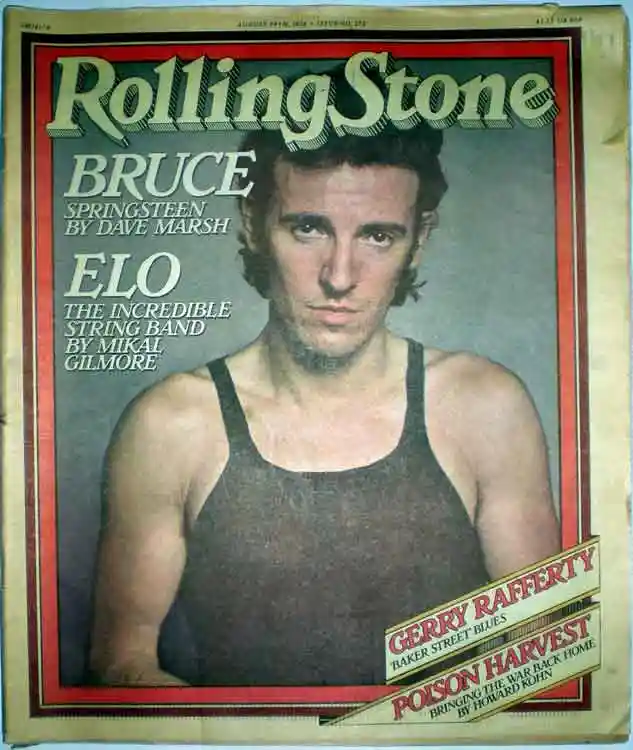
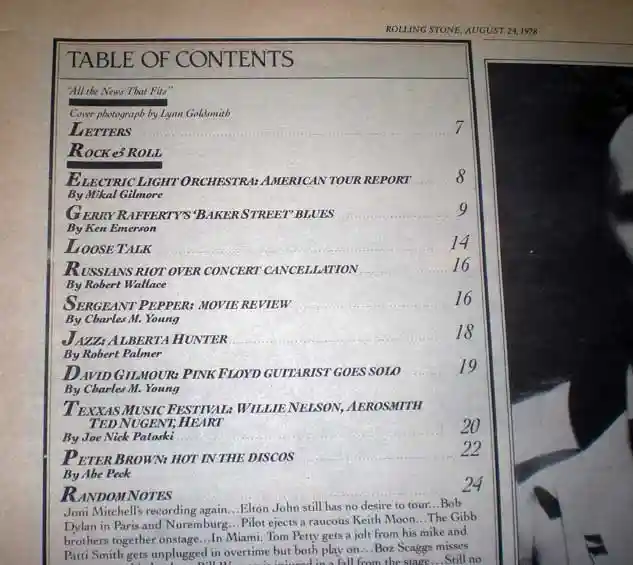
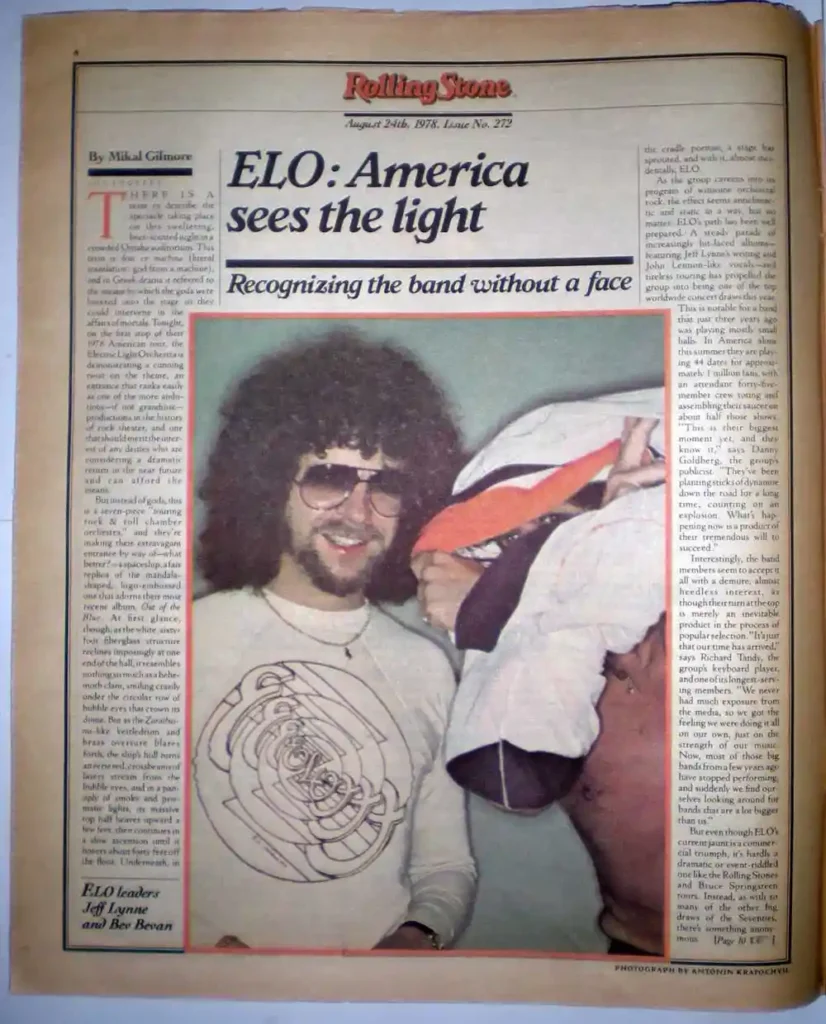
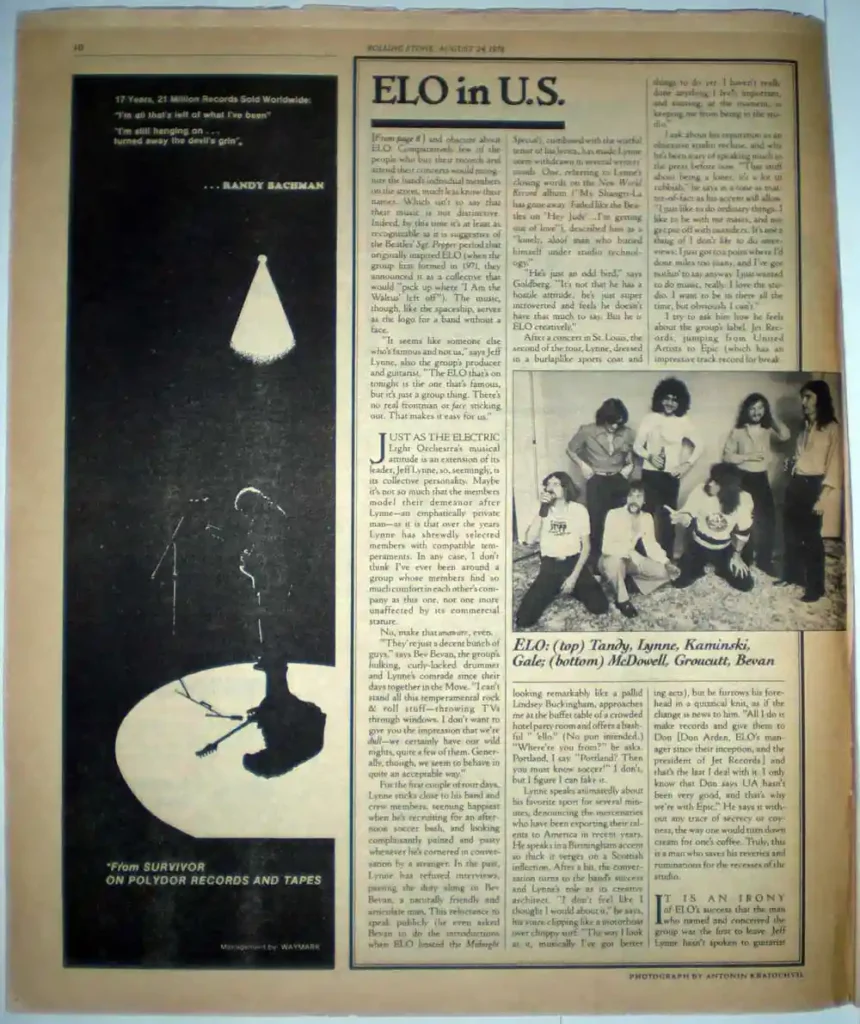
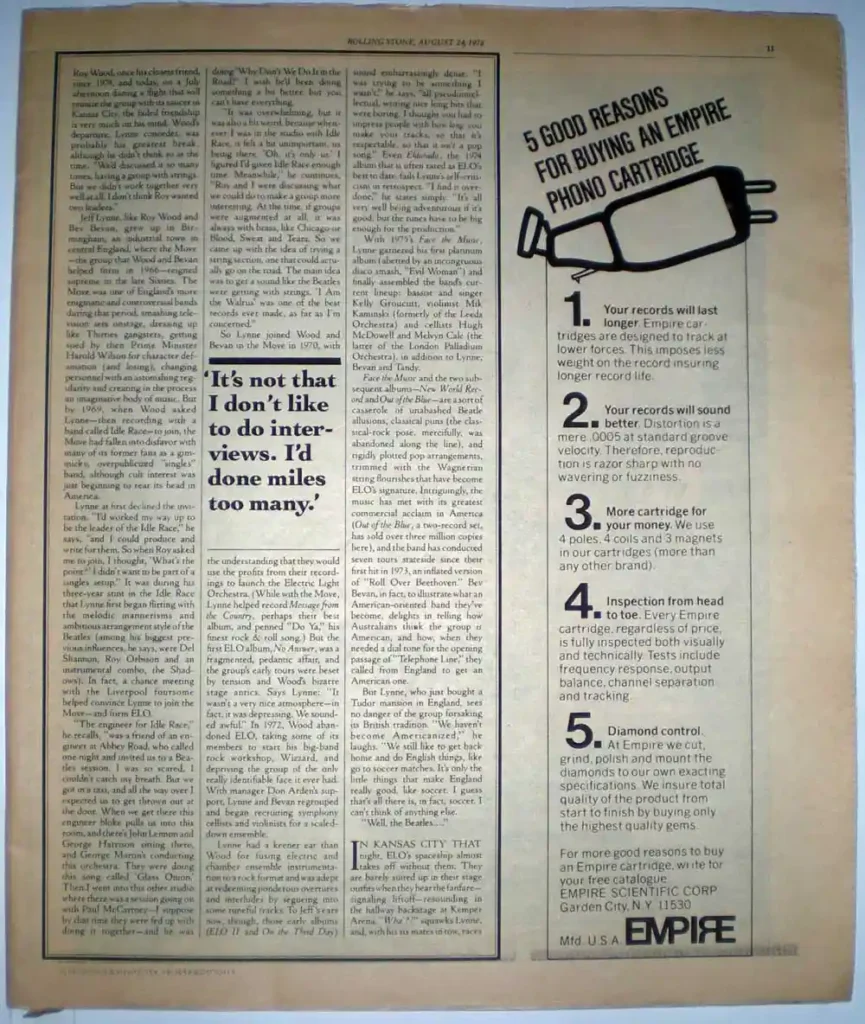
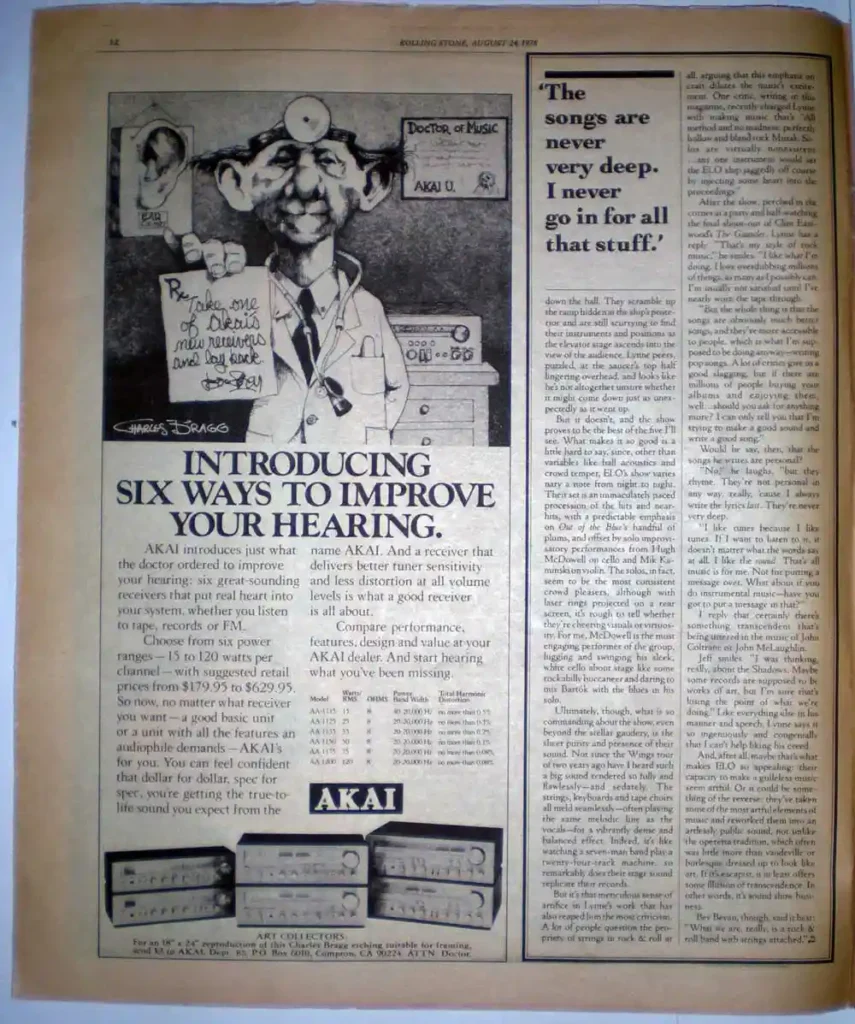
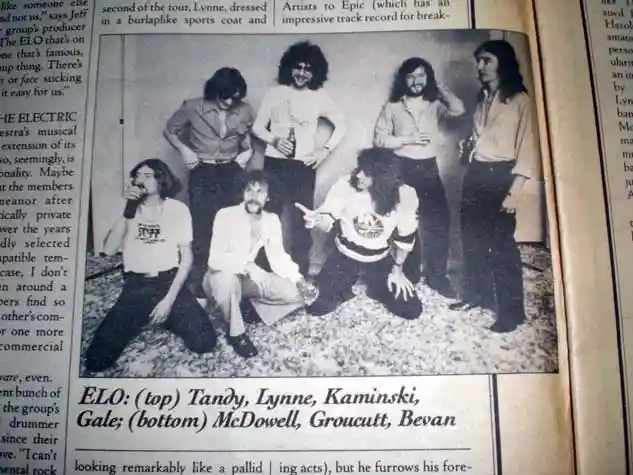
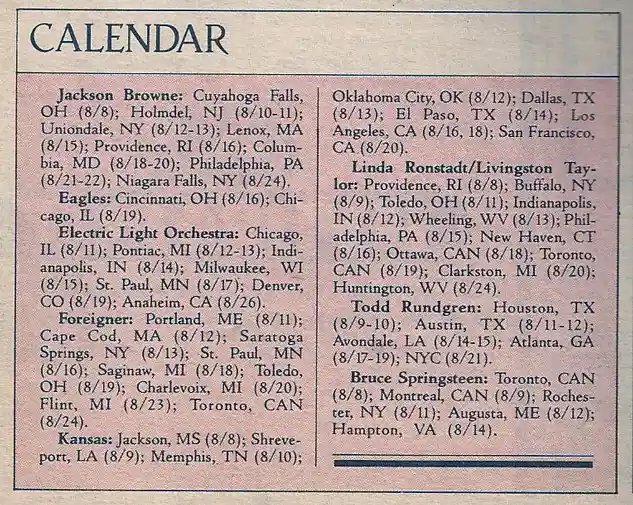
ELOSPAIN:
ELO Bootlegs: America Sees The Light
The third E.L.O. bootleg on vinyl, this time a double LP released by the pirate label "Atomic Records" in 1978, with the number AR 723.
It seems to be a single concert, although it's not in the correct order, as the beginning of the show is on the 2nd LP (sides 3 and 4), followed by the 1st LP (sides 1 and 2).
This show (also recorded by the BBC) is again from the "Face The Music World Tour" of 1976.
The cover (this time printed on the cover) shows, in brown tones, a photo and part of a 1978 article from Rolling Stone magazine, extensively detailing aspects and opinions of the first American concert of the 78' "UFO" tour.
Although there is nothing on the label of the 1st LP, on the 2nd one, it again shows a photo and credits that have absolutely nothing to do with E.L.O.
As curiosities, note that the first song is "Illusions In G Major," although here they have titled it "Doctor Let Me Teach Her," just like "Fire On High," which has transformed into "ElDorado Overture."
As a bonus filler track after "Roll Over Beethoven," "Kuiama" appears, but not live, it's the studio version from E.L.O. II from '72.
Mik Kaminski's solo incorporates, after an "unbearable" demonstration of noises and effects from his violin, the classic "In The Hall Of The Mountain King," followed by "Hungarian Dance No. 5" and "Hoe Down," supported by Kelly on bass and Bev with percussion and drums.
Although we also can't escape the even more "unbearable," abstract, and very long (but essential at the time) session of strange noises and effects in the first part of Hug McDowell's cello solo, followed by "Flight Of The Bumble Bee" now only with Kelly on bass.
Here are the credits and the full text from the back cover of "America Sees The Light":
Credits:
- Jeff Lynne: Guitar, vocals
- Bev Bevan: Drums
- Richard Tandy: Keyboards
- Mik Kaminski: Violin
- Hug McDowell: Cello
- Kelly Groucutt: Bass
Side One:
- Doctor Let Me Teach Her
- Violin Solo
- Hoe Down
- Strange Magic
- 10538
- Do Ya
Side Two:
- Evil Woman
- Ma Ma Ma Belle
- Roll Over Beethoven
- Kuiama
Side Three:
- ElDorado Overture
- Poker
- Nightrider
- Ocean Breakup
- King Of The Universe
- Bluebird
Side Four:
- Violin Solo
- Showdown
- Can´t Get It Out Of My Head
Text on the Back Cover:
Begun in 1972 by guitarist Roy Wood and Jeff Lynne of the British group the Move, the Electric Light Orchestra was intended to be a group that would experiment with strings and classical-music influences in the context of rock and roll. The first album they produced, recorded by Lynne, Wood, drummer Bev Bevan, and cellist Hugh McDowell, was released in 1971. Called The Electric Light Orchestra, it was quite experimental but nevertheless successful in Britain. In 1972, Roy Wood left with McDowell to form a band called Wizzard, but Lynne and Bevan rebuilt ELO, gathering an eclectic group of musicians, some with experience in classical music, some with experience in rock. ELO, by then a nine-man group, went on to record ELO II, released in 1973. This album contained the group´s complex masterpiece and smash commercial success “Roll Over Beethoven”, an orchestral restatement of the Chuck Berry classic. The piece may have been a smash, but early concerts were not so successful. Bev Bevan recalls that ELO had enormous difficulty combining the violin and cellos with the highly amplified rock instruments. It wasn´t until they got some direct amplifiers for the strings that they were able to make the instruments work together. Their third album, On The Third Day, was mostly a conceptual album, but the fourth, ElDorado, was finally able to establish the group. Lynne considers it twice as good as any of their other albums. “It was the first time we used an actual orchestra rather than just a few strings dubbed again and again”. ELO´s best-selling single “Evil Woman” came from their fifth album, the gold-awarded Face The Music, and that was followed by a platinum collection of their greatest hits, Olé ELO, released in the summer of 1976. A New World Record, released in October of 1976, has sold more than 2 million copies, winning for them their second platinum disk. The year 1977 saw their single “Living Thing” reach the top ten, supported by their ambitious forty-city tour of the United States and Canada.
Atomic Records a division of Omega Artist Inc., 112 E. 47th St., New York, New York.
This is Rolling Stone issue number 272 from August 24, 1978, featuring Bruce Springsteen on the cover and the complete feature on ELO (including the page used as the cover for "America Sees The Light").
Also included is the magazine's index, where the feature on ELO is advertised on page 8, and an August 1978 concert calendar, showcasing, among others, the shows from ELO's Out Of The Blue Tour scheduled for that month in the USA.

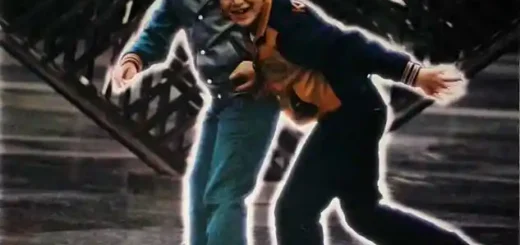
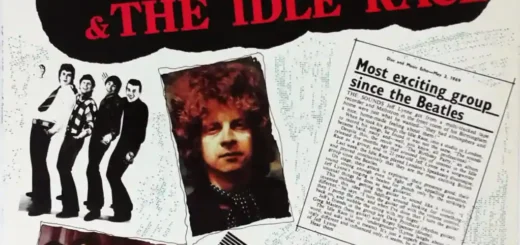
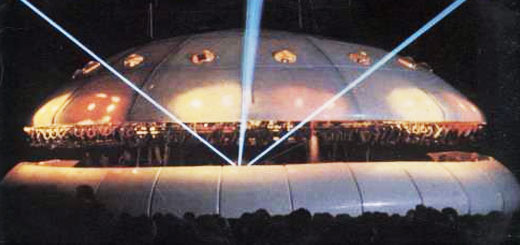
comentar, para quien este interesado que, si copiais las fotos del articulo del rolling stone en vuestros ordenadores, se pueden ampliar bien hasta poder leer bien todo el texto del articulo..
en él, lynne comenta cosas muy interesantes..
saludos